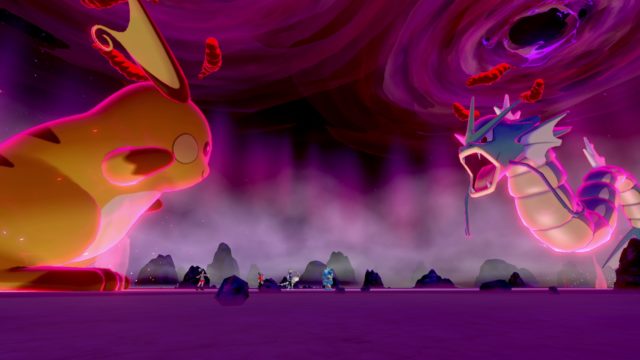
I love the Pokémon series, but I admit that so far I’m not one hundred percent on board with Pokémon Sword and Shield. That opinion didn’t change too much after my demo of the game, although I am willing to say I’m now feeling more positive than negative about the pair than I was before. To put things into perspective, let me explain that the demo didn’t reveal a lot because all I essentially got to do was explore a gym and then battle the leader. What I saw, however, should set many a Pokémon Let’s Go-detractor’s mind at ease, so let’s jump right into it.
While I’m of the mind that the Let’s Go duo was really striking from a graphical standpoint, Sword and Shield are arguably a whole step above. In many ways, Sword and Shield truly gives the sensation that Pokémon as a series is “growing up” when it comes to visuals. It felt very much like I was watching the anime come to life before me. I’ll always adore the more traditional pixel-based graphics of older series installments, but this (forgive the pun) evolved take suits Pokémon and doesn’t feel out of place. This isn’t an attempt to make Pokémon hyper-realistic, it’s instead a fusion of styles that offers the best of the cartoons and what a modern HD console can do, all in one package.
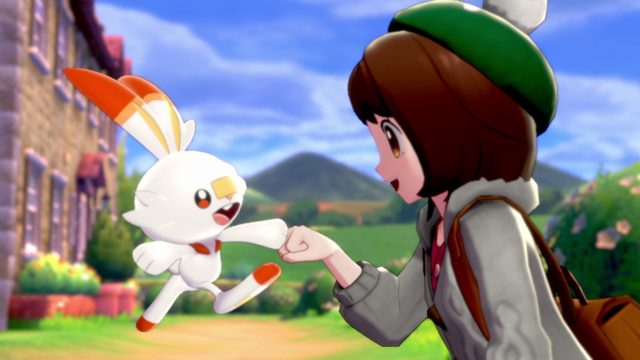
One thing that I didn’t get to try firsthand was capturing any Pokémon, but I do know from my talk with the Nintendo attendant at the show that battles with wild Pocket Monsters is back. Unlike Let’s Go, where all players had to do was fling Poké Balls at the creatures in order to capture them, Sword and Shield once again calls upon trainers to earn a Pokémon’s fealty through battle. I’m very glad that Nintendo and Game Freak aren’t backing away from this part of the series, especially given some of the strange, awkward interpretations of Pokémon battling coming from a handful of media pundits following the release of Pokémon: Detective Pikachu. Pokémon battling has roots in ceremonial combat like sumo, or even the martial arts, and should never be misconstrued or belittled.
What isn’t coming back are random battles. I… don’t really know how to feel about that! On the one hand, I’ve spent many an hour of my life cursing Zubats for wasting my time when all I want to do is get out of a cave. On the other hand, it’s that grind of taking on unbidden ‘Mon waiting in the grass that plays a big part in making Pokémon what it is. That said, I think that rendering Pokémon visible out on the field and in caves is a smart compromise. There are enough of the creatures that pop up in a given area that sometimes they’re hard to avoid, anyway, which isn’t all that different from random encounters. At the same time, it allows for smoother trips to and from different areas of the overworld— and who couldn’t use a break when they’re just trying to get to a Poké Center for a refresh of their party? Absolute purists aside, I think this is a feature from Let’s Go that’s been cleverly adapted for Sword and Shield and will please many a fan.
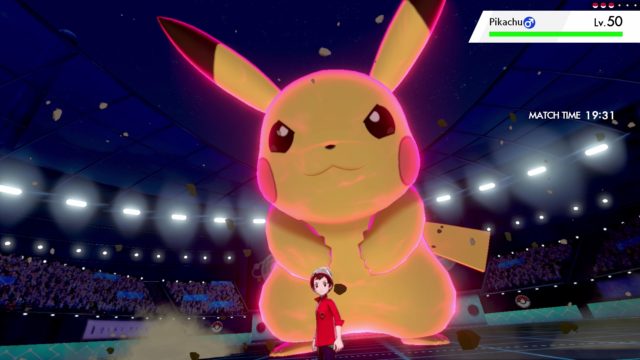
What isn’t so clever is the addition of Dynamax. Basically, Pokémon in the new Galar Region get big. They also battle that way, sometimes. That’s… about it. In my time with the demo I didn’t see anything to dissuade me from my initial reaction to Dynamax the first time Nintendo showed the feature off, which was, “well, that’s sort of boring.” Pokémon get big. The end. Okay, yes, each Pokémon that goes Dynamax gets access to some special attacks (and an accompanying boost in strength). It only lasts for a handful of turns before the Pokémon reverts back to normal size, thus making it key to time the transformation for only the most integral of junctures in a battle. Pokémon can only go Dynamax once per battle. Yet, despite all that, it felt underwhelming. Maybe if Nintendo showed off someone cooler than a Diglett getting huge I’d feel differently?
The gym itself wasn’t a disappointment, though. Water-based, there were a series of pipes gushing the fluid up into the ceiling all throughout the facility. The pillars of water barred movement, so I had to navigate by looking for valves to turn the pipes on and off in order to proceed. Littered throughout the gym were a number of trainers waiting to challenge me as I went from one section to the next. All in all, it was some classic Pokémon gameplay and felt great. Battles are energetic and spectacular to watch, with silky animations and bold effects to make each Pokémon’s attacks more vibrant than ever. I eventually reached the leader of the gym, Nessa, and… well, I got my butt kicked!
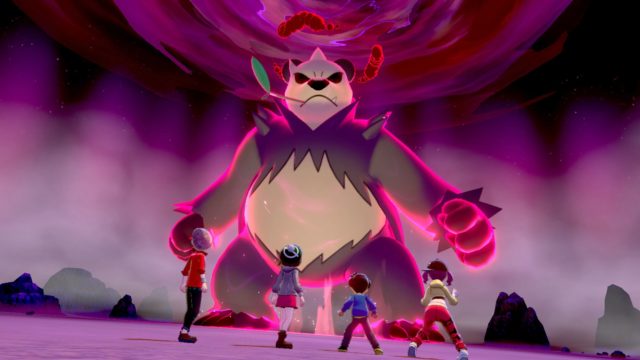
I might not be sold on Dynamax, but not knowing how to utilize it will make all the difference in battle. I mistakenly thought that Nessa was about to Dynamax a member of her party, so I activated my own to counter. A mistake— Nessa didn’t enlarge any of her Pokémon, so I ended up wasting the maneuver too early in battle. Eventually, once Nessa did activate Dynamax, my team was no match for it and I succumbed. Overall, it was a really fun battle. The grandeur of duking it out in a stadium really elevated the whole encounter and gave the match a sense of importance that is usually reserved for the Elite Four. It was impressive.
Before I go, I’d like to touch on Nessa and some of the reaction to her. Some people are focusing on the character being dark-skinned. As a Mexican, I’m always appreciative of diversity in the media I consume. I know that for many fans, the ability to customize the skin tone of each Pokémon game’s protagonist felt long overdue, especially considering the character is always a nameless cypher. Yet, reading some of the online reaction to Nessa, both on social media and from other video game outlets, I can’t help but be miffed by how off-base some people’s interpretations of representation in Pokémon are.
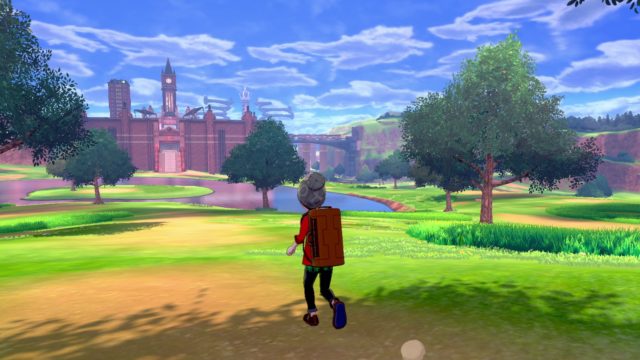
For one thing, people of color have always been in the games and anime. For another, it’s key to understand that how people in the West view representation in these games needs to be framed by the fact that they’re made in Japan, not here. Overwhelmingly, in Japanese manga, anime, and games, race and ethnicity aren’t handled the way some people seem to think. Characters are depicted as generic “people;” think of a stick figure, for instance. That’s a symbol which represents a person not tied to race or ethnicity. It just means, this is a human. That’s it. In anime, manga, and games, unless it’s explicitly stated, the characters aren’t “white” or “black,” “Mexican” or “Chinese.” They’re just people.
Sure, it’s possible to infer different things about anime, video game, and manga characters based on a number of factors, but the point here is that Pokémon’s use of skin tones is a visual diversifier but it doesn’t offer anything specific about where any of these characters hail from, either physically or genetically, beyond the lore of the franchise. Remember, folks, Pokémon doesn’t even take place in our world, it’s set in a different universe entirely. I’m all for inclusion and I believe wholeheartedly that Pokémon has been, is, and always will be one of the leaders on that front. I just think that hyping up Nessa as though we’ve never seen a POC gym leader before is a bit silly and uninformed. I’m looking forward to seeing Nessa and everyone else in Sword and Shield when the games launch on November 15!




 ShareThis
ShareThis





